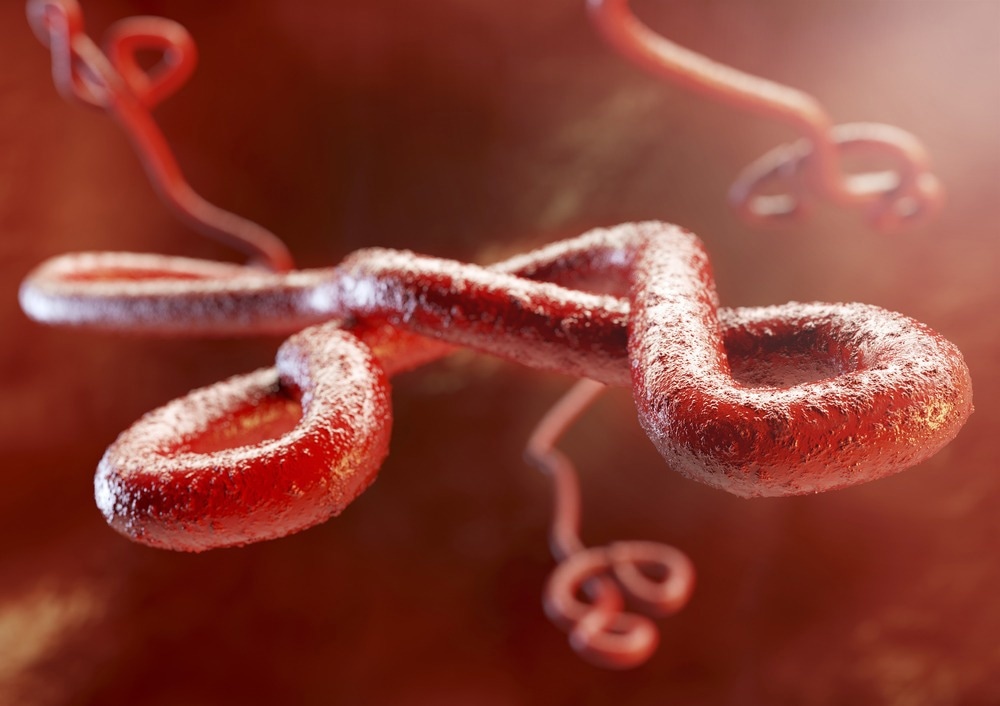The health authorities in Uganda have recently announced an Ebola Virus Disease (EVD) outbreak in Mubende District, Uganda, located in the central part of the country.

Study: Uganda declares Ebola Virus Disease outbreak. Image Credit: Crevis / Shutterstock.com
What is EVD?
EVD is a severe illness that affects humans and other primates and could be fatal if left untreated. The Ebola virus was first reported in 1976 in two simultaneous outbreaks in Nzara, South Sudan, Yambuku, and the Democratic Republic of the Congo. EVD was named after the Ebola river, which passed near a village where the viral spread was first detected.
The Ebola virus belongs to the family Filoviridae, which includes three genera: Ebolavirus, Marburgvirus, and Cuevavirus. Fruit bats are natural hosts for the Ebola virus.
This virus can be transmitted through direct contact with the bodily fluids of infected animals to humans. Subsequently, human-to-human transmission has been reported through direct contact, such as when a healthy individual is exposed to an infected person’s blood, mucous membranes, broken skin, and other body fluids.
The incubation period of the Ebola virus ranges between two and twenty-one days. Common symptoms of EVD include fever, muscle pain, headache, sore throat, fatigue, vomiting, rash, diarrhea, elevated liver enzyme levels, and reduced white blood cell and platelet counts. Currently, vaccines, monoclonal antibodies, and drugs are available to treat EVD.
EVD outbreak in Uganda
The Uganda Virus Research Institute confirmed the occurrence of Ebola infection after testing a sample obtained from a 24-year-old male resident of Ngabano village of Madudu Sub County in Mubende District who died later. Following this event, the National Rapid Response team investigated six suspicious deaths in the same district. There are seven confirmed EVD cases, three suspected cases, and one death.
Dr. Matshidiso Moeti, the World Health Organization (WHO) Regional Director for Africa, stated that after more than a decade, Uganda is experiencing an outbreak of the Sudan ebolavirus. The WHO is closely working with national health authorities to identify the source of this outbreak.
The WHO also supports Uganda with every available resource to manage and prevent further outbreaks. For example, the organization has deployed staff in the affected area and provided supplies to help patients who have already contracted EVD. Tents have also been provided to isolate patients from the general population.
Uganda is no stranger to effective Ebola control. Thanks to its expertise, action has been taken to quickly detect the virus, and we can bank on this knowledge to halt the spread of infections."
A total of seven Sudan ebolavirus outbreaks have been recorded, four of which occurred in Uganda and three in Sudan. Uganda previously experienced a Sudan ebolavirus outbreak in 2012; however, in 2019, it experienced a Zaire ebolavirus outbreak imported from the neighboring Democratic Republic of the Congo.
Vaccination against EVD
The morphology of the Sudan strain of the Ebola virus is distinct from the Zaire strain. Ervebo vaccine is highly effective in controlling the recent Ebola outbreak in the Democratic Republic of the Congo; however, this vaccine was previously effective against the Zaire ebolavirus and not against the Sudan species.
Another Ebola vaccine manufactured by Johnson and Johnson has demonstrated effectiveness against the virus. However, its efficacy, specifically against the Sudan strain, has not yet been determined.